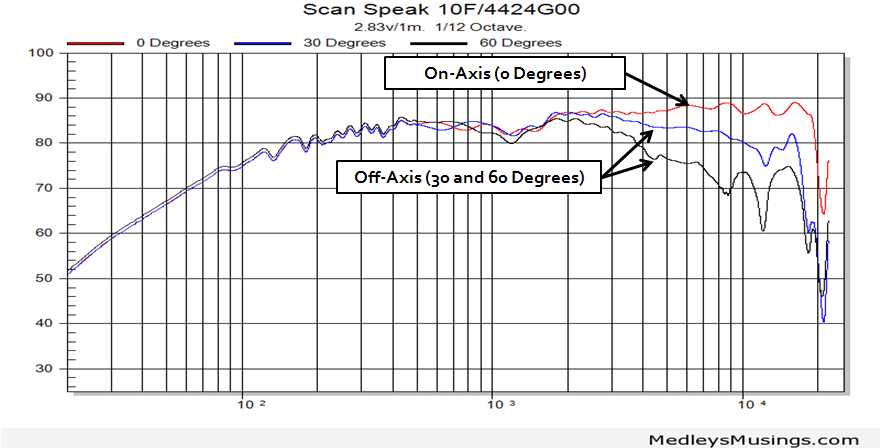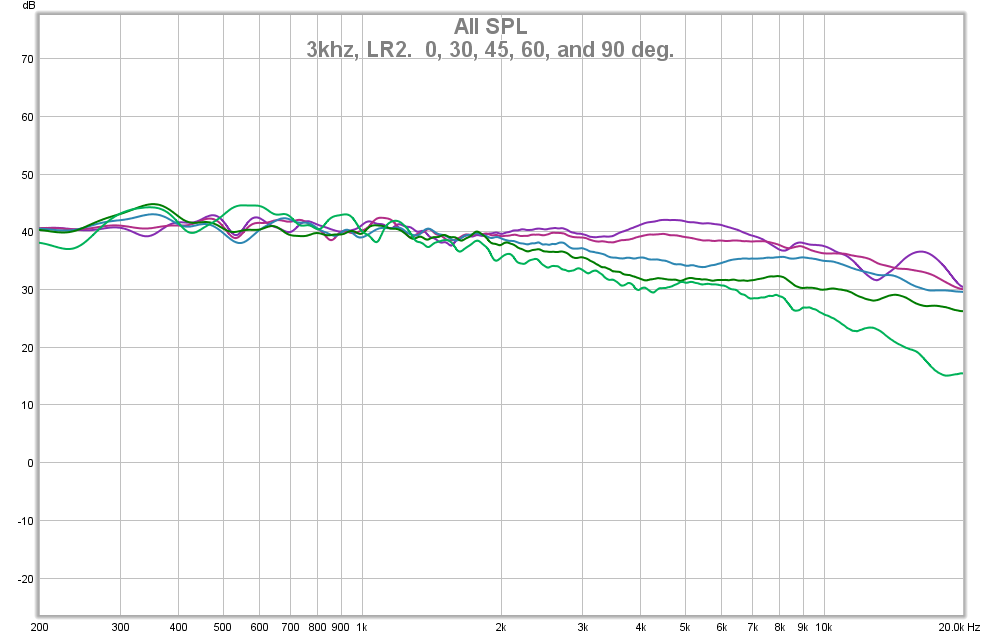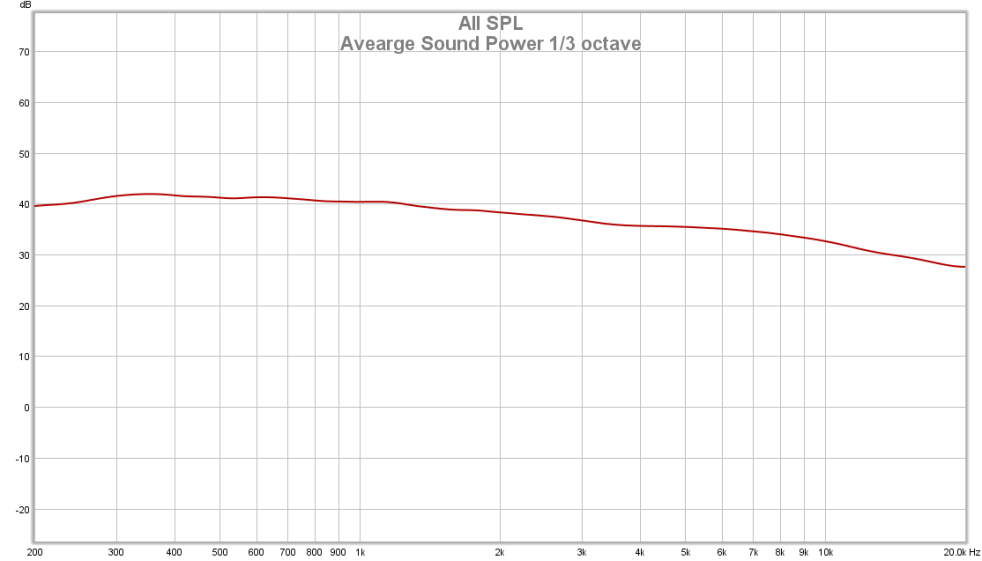Basics of Drivers
The following sections are intended to help you understand the important aspects of a raw driver and data which will then lead to helping determine nominal crossover points.
Response Types:
Frequency Response:
The measure of frequency (Hz) vs amplitude (dB) across a given range
Multiple frequency response measurements at varying axes are taken to show how the driver behaves in all directions. Those axes are comprised of the following:
On-axis response: Speaker/system response when the listener is directly facing the speaker (SINGLE POINT).
Off-axis response: Speaker/system response when the listener is anywhere EXCEPT directly on-axis (typical range is 15 to 90 degrees off-axis in car).
Ideally, the frequency response will indicate no hot or cold spots in response as the listener/measurement mic moves around the speaker
The driver or speaker shall maintain it’s general response, other than a decreasing output level as the frequency gets higher
Below is the frequency response on-axis (0 degrees) and off-axis (30 and 60 degrees). Note the graph legend in addition to callouts.
Polar Response:
Another way of relating frequency response using a particular frequency or frequencies, mapped out in a polar pattern, representing the directivity of a speaker at varying angles (ie; as you move from 0 degrees on-axis to any angle off-axis)
Below is a polar response example of a speaker modeled in LEAP. The model was derived based on a simulated horizontal axis measurement ranging from 10hz to 1.28khz. You can see that as the frequency increases, the radiation changes from omnidirectional to more directional.
Power Response:
Single measurement which is the sum total of both direct and reflected sounds and is a representative example of what the listener will hear at a given location
Typically an average of multiple measurements in the listener’s head area
An “ideal” power response is one with no significant peaks or dips caused by irregularities from any single axis of measure
The total response shall roll-off smoothly. The rate of roll-off is a matter of directivity index.
When you RTA and average the results, power response is what you are measuring.
The picture below shows a speaker measured both on and off-axis in varying axes. The subsequent picture is an average of all these measurements, which results in the power response measurement.




No comments:
Post a Comment